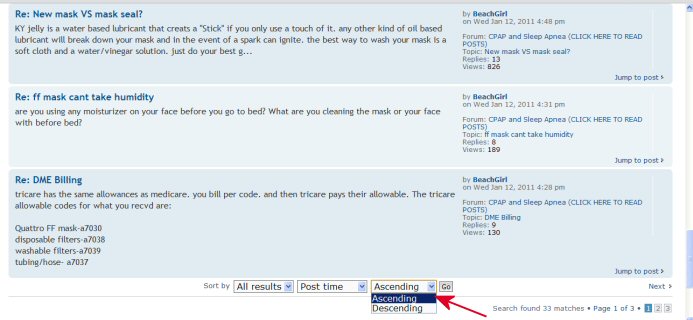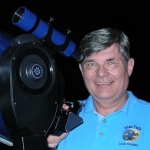Controlling our own treatment
Re: Controlling our own treatment
Last edited by BeachGirl on Fri Jan 14, 2011 9:54 pm, edited 1 time in total.
Re: Controlling our own treatment
Well, here's one...
"the pressure is adjusted for each patient’s individual physical needs and is typically only enough to push the oxygen into his or her system; there’s no need to think that this is going to over-inflate your lungs or cause damage in any way."
-- http://sleepapneasnoringcures.com/side- ... ap-machine
"the pressure is adjusted for each patient’s individual physical needs and is typically only enough to push the oxygen into his or her system; there’s no need to think that this is going to over-inflate your lungs or cause damage in any way."
-- http://sleepapneasnoringcures.com/side- ... ap-machine
The OSA patient died quietly in his sleep.
Unlike his passengers who died screaming as the car went over the cliff...
Unlike his passengers who died screaming as the car went over the cliff...
Re: Controlling our own treatment
popcorn? peanuts? get yer popcorn.....candy bars....
"Knowledge is power."
Re: Controlling our own treatment
Last edited by BeachGirl on Fri Jan 14, 2011 9:53 pm, edited 1 time in total.
Re: Controlling our own treatment
BeachGirl is a good example of "a little knowledge is a dangerous thing"
According to http://www.convertworld.com/en/pressure/ , one cmH2O (the standard unit of pressure for CPAP machines) is equal to about 0.03 "inches of Mercury" (the familiar pressure units used in US Weather forecasts). To put that 0.03 inches of Mercury in perspective, on a nice day, the barometric pressure is typically around 30 inches of Mercury give or take about 0.25 of an inch.
Let's see: The ordinary CPAP/APAP has a maximum setting of 20cm H2O setting. That's equivalent to adding 0.58 inches of Mercury of pressure above the prevailing atmospheric pressure in the room you're sleeping at (if you're using 20cm). Now, let's see: Half inch changes in atmospheric pressure aren't that rare---they happen pretty commonly any time a storm system comes through and most people don't tend to react to the change in pressure. Of course, a few people do: folks with arthritis in their knees or some highly sensitive folks like me who might get a pressure headache. But we don't see lots of burst lungs every time a storm comes through.
Of course BeachGirl would say, "But those storm changes in pressure are too gradual to matter. It's SUDDEN changes in pressure that matter!" And she's partially right. (As I said, a little knowledge is a dangerous thing.) The problem in the cases BeachGirl cites:
Now a web search will show that it is possible for barotrauma to occur in a clinical setting. On such article is found at: http://emedicine.medscape.com/article/296625-overview But notably the authors of this article state:
I think it's safe to say that BeachGirl is behaving a bit like Chicken Little here running around saying The SKY is FALLING! The SKY is FALLING!
According to http://www.convertworld.com/en/pressure/ , one cmH2O (the standard unit of pressure for CPAP machines) is equal to about 0.03 "inches of Mercury" (the familiar pressure units used in US Weather forecasts). To put that 0.03 inches of Mercury in perspective, on a nice day, the barometric pressure is typically around 30 inches of Mercury give or take about 0.25 of an inch.
Let's see: The ordinary CPAP/APAP has a maximum setting of 20cm H2O setting. That's equivalent to adding 0.58 inches of Mercury of pressure above the prevailing atmospheric pressure in the room you're sleeping at (if you're using 20cm). Now, let's see: Half inch changes in atmospheric pressure aren't that rare---they happen pretty commonly any time a storm system comes through and most people don't tend to react to the change in pressure. Of course, a few people do: folks with arthritis in their knees or some highly sensitive folks like me who might get a pressure headache. But we don't see lots of burst lungs every time a storm comes through.
Of course BeachGirl would say, "But those storm changes in pressure are too gradual to matter. It's SUDDEN changes in pressure that matter!" And she's partially right. (As I said, a little knowledge is a dangerous thing.) The problem in the cases BeachGirl cites:
all involve going from an environment where the pressure is significantly greater than or significantly less than normal atmospheric pressure to an environment with pressure relatively close to normal atmospheric pressure in a relatively short period of time. The pressure change in these dangerous situations is far greater than the typical pressure that is added to the ambient atmospheric pressure by a CPAP or APAP machine set at even its maximum settings.Barotrauma typically occurs to air spaces within a body when that body moves to or from a higher pressure environment, such as when a SCUBA diver, a free-diving diver or an airplane passenger ascends or descends, or during uncontrolled decompression of a pressure vessel
Now a web search will show that it is possible for barotrauma to occur in a clinical setting. On such article is found at: http://emedicine.medscape.com/article/296625-overview But notably the authors of this article state:
AndAlthough nonmechanically ventilated patients may have barotrauma, most cases occur in patients receiving mechanical ventilation.
No mention of barotrauma outside of the clinical setting of mechanically ventilated patients who were in critical condition and had pre-existing lung conditions was mentioned in this particular article. No mention of CPAP by ordinary OSA patients was mentioned.Given the description above, alveolar overdistension is the key element in the development of barotrauma. In this sense, barotrauma is a misnomer because barotrauma suggests the presence of elevated pressures in its pathogenesis. Current concepts suggest that high tidal volume ventilation produces the alveolar disruption that triggers the aforementioned chain of events.
I think it's safe to say that BeachGirl is behaving a bit like Chicken Little here running around saying The SKY is FALLING! The SKY is FALLING!
_________________
| Machine: DreamStation BiPAP® Auto Machine |
| Mask: Swift™ FX Nasal Pillow CPAP Mask with Headgear |
| Additional Comments: PR System DreamStation and Humidifier. Max IPAP = 9, Min EPAP=4, Rise time setting = 3, minPS = 3, maxPS=5 |
Re: Controlling our own treatment
Now wait just one minute! Beachgirl is right.
CPAP's are EXTREMELY DANGEROUS.
If dropped on your head.
CPAP's are EXTREMELY DANGEROUS.
If dropped on your head.
_________________
| Machine: ResMed AirSense™ 10 AutoSet™ CPAP Machine with HumidAir™ Heated Humidifier |
| Mask: DreamWear Nasal CPAP Mask with Headgear |
What you need to know before you meet your DME http://tinyurl.com/2arffqx
Taming the Mirage Quattro http://tinyurl.com/2ft3lh8
Swift FX Fitting Guide http://tinyurl.com/22ur9ts
Don't Pay that Upcharge! http://tinyurl.com/2ck48rm
Taming the Mirage Quattro http://tinyurl.com/2ft3lh8
Swift FX Fitting Guide http://tinyurl.com/22ur9ts
Don't Pay that Upcharge! http://tinyurl.com/2ck48rm
Re: Controlling our own treatment
Interesting idea that our lungs could burst or be damaged by incorrectly setting our pressures..... When I first started this journey and learned that I could set my own pressures, I SPECIFICALLY asked my sleep doc (who is a pulmonologist) what range I needed to stay under to avoid damaging my lungs. He laughed (nicely--he wasn't making fun of me), and said that there was NO WAY I could hurt myself using any of the pressures on any cpap/autopap, so I should feel free to experiment to find what was comfortable and worked.
I doubt he would have told me that if there was an immediate danger of my going too high and harming myself. Quite the opposite, he was thrilled that I was taking control of my treatment and was willing to experiment to find what worked best for me.
Robysue--as always your analysis of the underlying math is fabulous. Thank you! I have learned so much from your posts....wish I had had a prof like you for my stats classes!
Weezy
I doubt he would have told me that if there was an immediate danger of my going too high and harming myself. Quite the opposite, he was thrilled that I was taking control of my treatment and was willing to experiment to find what worked best for me.
Robysue--as always your analysis of the underlying math is fabulous. Thank you! I have learned so much from your posts....wish I had had a prof like you for my stats classes!
Weezy
_________________
| Mask: Swift™ FX Nasal Pillow CPAP Mask with Headgear |
| Humidifier: S9™ Series H5i™ Heated Humidifier with Climate Control |
| Additional Comments: Hybrid is alternate mask |
- sydneybird
- Posts: 122
- Joined: Sat Dec 04, 2010 8:42 pm
Re: Controlling our own treatment
Nice bit of analysis robysue. I want you on my CPAP design team. I was wondering what the air pressure is by sticking your head out of a car window going 20 mph? Did it all the time as a kid and thought it was fun not being about to exhale. I don't think it burst my lungs. My biggest fear was getting my head chopped off by a tree branch.
My doctor has prescribed me to lose weight, but I still can't stop eating cream puffs. I guess my health insurance won't cover the effects of my over indulgence, according to what beachgirl was told. I think doctors tell patients that smoke to quit smoking, but they are still covered when they get lung cancer. The logic of health insurance not covering the results of not following the doc's Rx does not make sense to me. It's one thing to disable the safety feature on a lawn mower resulting in not being able to hold the lawn mower company liable for injury (although it is tried all the time), but your health insurance will cover the ER visit to reattach your foot, and they won't check to see if you disabled the safety.
I'm not attacking beachgirl and I don't want her to feel alienated. I just question what she has been told. I think her class instructor is leading her astray and it is good that we have people here to make sense of it all.
Speaking from my experimentation with my minimum APAP settings from 4 to 11, leaving the max on 20, I seem to have a sweet spot of 9 or 10, where above or below my stats get worse. So, more is not always better, but max can't kill you.
My doctor has prescribed me to lose weight, but I still can't stop eating cream puffs. I guess my health insurance won't cover the effects of my over indulgence, according to what beachgirl was told. I think doctors tell patients that smoke to quit smoking, but they are still covered when they get lung cancer. The logic of health insurance not covering the results of not following the doc's Rx does not make sense to me. It's one thing to disable the safety feature on a lawn mower resulting in not being able to hold the lawn mower company liable for injury (although it is tried all the time), but your health insurance will cover the ER visit to reattach your foot, and they won't check to see if you disabled the safety.
I'm not attacking beachgirl and I don't want her to feel alienated. I just question what she has been told. I think her class instructor is leading her astray and it is good that we have people here to make sense of it all.
Speaking from my experimentation with my minimum APAP settings from 4 to 11, leaving the max on 20, I seem to have a sweet spot of 9 or 10, where above or below my stats get worse. So, more is not always better, but max can't kill you.
Re: Controlling our own treatment
Welcome to the forum, BeachGirl. Thank you for sharing some of your training/education in Respiratory Therapy. HOWEVER, obstructive sleep apnea is NOT a pulmonary problem. It is an antomical problem: too large tongue, too long/large uvula, narrow jaw, parrot mouth, etc., etc. If you want to become involved in CPAP therapy you will need more than just respiratory therapy training to be effective.
My sleep pulmonologist (also a critical doctor) ordered my APAP set 4 cms to 20 cms - and he is WELL AWARE that I have COPD, have had a few blebs on my lungs from time to time and one pneumothorax. I never did get up to 20 cms but I also had no problems w/my lungs "popping". On the other hand, I did as we moved further along on my PAP therapy and some of the pressure over 10 cms I did encounter aerophagia and had to back down the pressure and bit and build up the pressure more slowly.
As I said earlier, respiratory therapy does NOT qualify one to be effective assisting OSA patients. You need the experience and training of learning the various models of PAPs, bi-levels, ASVs, etc. and their various "comfort" settings; how to PROPERLY fit a mask, etc.; to understand a PSG, to be able to "read" PSG results and their implications for therapy. Respiratory therapy is just NOT sufficient to do a good job working w/OSA patients. You need a much better understanding of sleep and sleep breathing disorders.
My sleep pulmonologist (also a critical doctor) ordered my APAP set 4 cms to 20 cms - and he is WELL AWARE that I have COPD, have had a few blebs on my lungs from time to time and one pneumothorax. I never did get up to 20 cms but I also had no problems w/my lungs "popping". On the other hand, I did as we moved further along on my PAP therapy and some of the pressure over 10 cms I did encounter aerophagia and had to back down the pressure and bit and build up the pressure more slowly.
As I said earlier, respiratory therapy does NOT qualify one to be effective assisting OSA patients. You need the experience and training of learning the various models of PAPs, bi-levels, ASVs, etc. and their various "comfort" settings; how to PROPERLY fit a mask, etc.; to understand a PSG, to be able to "read" PSG results and their implications for therapy. Respiratory therapy is just NOT sufficient to do a good job working w/OSA patients. You need a much better understanding of sleep and sleep breathing disorders.
_________________
| Mask: Quattro™ FX Full Face CPAP Mask with Headgear |
| Additional Comments: PR SystemOne BPAP Auto w/Bi-Flex & Humidifier - EncorePro 2.2 Software - Contec CMS-50D+ Oximeter - Respironics EverFlo Q Concentrator |
Women are Angels. And when someone breaks our wings, we simply continue to fly.....on a broomstick. We are flexible like that.
My computer says I need to upgrade my brain to be compatible with its new software.
My computer says I need to upgrade my brain to be compatible with its new software.
-
Wulfman...
Re: Controlling our own treatment
Welcome to the forum!BeachGirl wrote:I just want you all to know, that If you change the setting on your machine, and anything happens to you that could be related to sleep (stroke, heart attack...ect) and your machine settings show that your pressure is anything other than what was rx'd, they can (and get away with it) not cover anything related to it because you were not following the drs orders. 90% of machines on the market hold the data on them. even if youve altered the settings for a day or two, and then turned them back, the machine has this data stored in it. Not to mention, If you get the pressure to your cpap to high, easily put, your lungs can burst you and can suffocate. This can happen with a pressure change as low as .5 percent. If your doctor will not help you with a pressure change, find someone who can.
Please stick around and further your education.
I'm not sure where you heard all that gibberish, but I've highlighted some things I want to comment on. First of all, the 90% figure is just not true.......I'm sure that less than 10% of the machines that have been given to users over the last six years have been data-capable. The DMEs make more profit from handing out the cheapest, low-end, no frills machines......so, unless they're an exceptional DME shop, the chances of a user even getting a data-capable machine have been mighty slim (unless they knew what to ask for ahead of time). Most manufacturers make data-capable machines, but they may only be about 40 - 50% of their product line. Most of the doctors and DMEs only care about whether their patients/clients have been compliant with using the machine and few even bother to look at any data other than the hours used.......that's how they get their money from the insurance providers. Also, most doctors don't even believe the data is accurate.
This is OUR therapy......not the doctors or the DMEs.......OURS. This therapy has been compared many times with monitoring and treating Diabetes. People with diabetes and especially those who use insulin or other medications need to be able to monitor their blood sugar with meters and test strips and modify their diet, exercise and medications (if they take them). That's the same thing we do with our data-capable XPAP machines and software......monitor our therapy and tweak it to get the best results. One night of lousy sleep in strange bed all hooked up to wires just doesn't give a perfect picture of the best pressure setting for months or years of use.
If a doctor prescribes an APAP machine that is set to its default range of 4 - 20 cm., how can you be certain that it won't "over-pressure" (or even "under-pressure") the patient? And, if by chance it DID.......who would be to blame? The doctor?
I can't begin to tell you how many times we've seen postings on the forum of how some DME got a pressure or other setting wrong on the patient's machine (was different from the prescribed setting). Many times, it wasn't until after the patient was finally able to get the instructions to get into the setup on the machine and see it for themselves.
Same thing with finding and getting the right mask. Too many DMEs hand out nasal masks and the patient/user ends up leaking their therapy air out their mouth. That's NOT good therapy. And, without a data-capable machine and software, they probably won't know......unless they somehow FINALLY figure out that that dry mouth they've been having is due to their mouth-leaking.
Another issue is humidifier settings. If it's too high, that may actually make nasal congestion worse and then that leads to more mouth-breathing/mouth-leaking.
This is all about educating the XPAP user in achieving their best therapy results. Most people need to be able to figure lots of this out for themselves.......and this is where they come to get the knowledge to do that.
Telling people "DON'T DO THAT!" is not helpful. Age-wise, we're all "adults" here.......and most of us are "middle-age" or beyond......"baby boomers". Being told what to or what not to do doesn't go over very well with us.
And, yes, the Chairman of ResMed once said that the only way one of these machines could hurt someone is if they were hit over the head with them.
Den
Re: Controlling our own treatment
I have often wondered how they let us go out there in the world with these dangerous CPAP machines.....
I have a data-capable machine because I told my doc that's what I wanted. The DME questioned it too, and I told them I wanted to control my treatment. I check my data, and my sleep and my numbers have improved since I upped the pressure from 6.0 to 6.5. Maybe some day I'll get wild and turn it up to 7 just to get a head rush. Alright, I'm done.
Beachgirl, please keep your mind open and I hope you learn as much as we have on these forums.
I have a data-capable machine because I told my doc that's what I wanted. The DME questioned it too, and I told them I wanted to control my treatment. I check my data, and my sleep and my numbers have improved since I upped the pressure from 6.0 to 6.5. Maybe some day I'll get wild and turn it up to 7 just to get a head rush. Alright, I'm done.
Beachgirl, please keep your mind open and I hope you learn as much as we have on these forums.
_________________
| Mask: FlexiFit HC407 Nasal CPAP Mask with Headgear |
| Additional Comments: Other mask: Mirage Swift LT for Her Nasal Pillow Mask with Headgear |
- rested gal
- Posts: 12880
- Joined: Thu Sep 09, 2004 10:14 pm
- Location: Tennessee
Re: Controlling our own treatment
Excellent points by Slinky.Slinky wrote:Welcome to the forum, BeachGirl. Thank you for sharing some of your training/education in Respiratory Therapy. HOWEVER, obstructive sleep apnea is NOT a pulmonary problem. It is an antomical problem: too large tongue, too long/large uvula, narrow jaw, parrot mouth, etc., etc. If you want to become involved in CPAP therapy you will need more than just respiratory therapy training to be effective.
BeachGirl, I also welcome you to the forum. Even if some disagree with what you are saying (I'm one who disagrees with most of what you've said so far in this topic) it's perfectly ok for you to say what you think. You're going by what you've been taught so far. I think you mean well, and are truly concerned that people here will hurt themselves. Hope you'll not close your mind to what you can learn about CPAP therapy if you'll dig into this message board some more. A lot more, actually.
You're welcome to keep posting, but even if you decide not to post, do please keep reading if you hope to be truly helpful to your future cpap users. The reading is best done with an open mind.
"Raise their own pressure without talking to a doctor? "
"Tape over their mouths?!!! "
"Buying their own machines and setting it up themselves?!!"
After being shocked, please keep reading in order to see just why a lot of people here choose to do things like that. Doing it safely themselves. And doing it for more effective treatment which they monitor themselves.
By the way, I looked up and read quite a few of your previous posts in other topics. You seem to be a caring person who genuinely wants to help people. There were quite a few topics where you offered suggestions for mask problems.
It's perfectly ok to express your opinion here, even if it might not be a popular opinion. Others will say what they think, too, as you see. You've been polite about defending what you believe.
Hope you'll stick around and keep trying to help people.
ResMed S9 VPAP Auto (ASV)
Humidifier: Integrated + Climate Control hose
Mask: Aeiomed Headrest (deconstructed, with homemade straps
3M painters tape over mouth
ALL LINKS by rested gal:
viewtopic.php?t=17435
Humidifier: Integrated + Climate Control hose
Mask: Aeiomed Headrest (deconstructed, with homemade straps
3M painters tape over mouth
ALL LINKS by rested gal:
viewtopic.php?t=17435
- rosiefrosie
- Posts: 680
- Joined: Tue Mar 07, 2006 7:05 pm
- Location: MN
Re: Controlling our own treatment
My thoughts exactly!SleepyT wrote:popcorn? peanuts? get yer popcorn.....candy bars....
_________________
| Mask: DreamWear Nasal CPAP Mask with Headgear - Fit Pack (All Cushions Included with Medium Frame) |
| Humidifier: DreamStation Heated Humidifier |
| Additional Comments: 7.4 pressure setting |
-
WestCoastCdnGrl
- Posts: 140
- Joined: Fri Dec 24, 2010 1:02 am
- Location: London, England
Re: Controlling our own treatment
please do not feed the trolls.
thank you very much.
thank you very much.
_________________
| Mask: Oracle HC452 Oral CPAP Mask |
| Humidifier: S9™ Series H5i™ Heated Humidifier with Climate Control |
- rested gal
- Posts: 12880
- Joined: Thu Sep 09, 2004 10:14 pm
- Location: Tennessee
Re: Controlling our own treatment
I understand what you mean, WestCoastCdnGrl. If that were Beach Girl's first post on here ever, I'd think, "Hmmm...possible troll. We'll see."
I'd also consider that it miiiight be a person who really and truly believes some of the things we talk about here are dangerous. Beach Girl a troll? I don't think so.
I clicked her name on one of her posts in this thread. Takes you to her Profile. In the profile you can click "Search user's posts."
Takes you to a list of all the posts that person has written since registering on cpaptalk.
I scrolled down to the bottom of the first page of the list. Clicked "Descending" and "Go" to sort Beach Girl's posts into her earliest posts first:

She had written almost 30 posts in a variety of threads before she posted in this topic.
I started working my way from her first posts onward. I didn't try to read all her posts, but I skip-read through quite a few. The impression I got from her writings was that Beach Girl is a person who came to this forum genuinely wanting to help people. Just like many of us try to do.
A strong difference of opinion...especially a sincere opinion that runs strongly counter to what quite a few of us (equally sincerely) think about the benefits of adjusting our own pressure...does not a troll make. In my opinion, anyway.
I hope Beach Girl does keep trying to help people, both here and in her profession. I hope she continues to feel free to say what she thinks here and can take the heat when she does. Same as we all should do.
I'd also consider that it miiiight be a person who really and truly believes some of the things we talk about here are dangerous. Beach Girl a troll? I don't think so.
I clicked her name on one of her posts in this thread. Takes you to her Profile. In the profile you can click "Search user's posts."
Takes you to a list of all the posts that person has written since registering on cpaptalk.
I scrolled down to the bottom of the first page of the list. Clicked "Descending" and "Go" to sort Beach Girl's posts into her earliest posts first:

She had written almost 30 posts in a variety of threads before she posted in this topic.
I started working my way from her first posts onward. I didn't try to read all her posts, but I skip-read through quite a few. The impression I got from her writings was that Beach Girl is a person who came to this forum genuinely wanting to help people. Just like many of us try to do.
A strong difference of opinion...especially a sincere opinion that runs strongly counter to what quite a few of us (equally sincerely) think about the benefits of adjusting our own pressure...does not a troll make. In my opinion, anyway.
I hope Beach Girl does keep trying to help people, both here and in her profession. I hope she continues to feel free to say what she thinks here and can take the heat when she does. Same as we all should do.
ResMed S9 VPAP Auto (ASV)
Humidifier: Integrated + Climate Control hose
Mask: Aeiomed Headrest (deconstructed, with homemade straps
3M painters tape over mouth
ALL LINKS by rested gal:
viewtopic.php?t=17435
Humidifier: Integrated + Climate Control hose
Mask: Aeiomed Headrest (deconstructed, with homemade straps
3M painters tape over mouth
ALL LINKS by rested gal:
viewtopic.php?t=17435


















